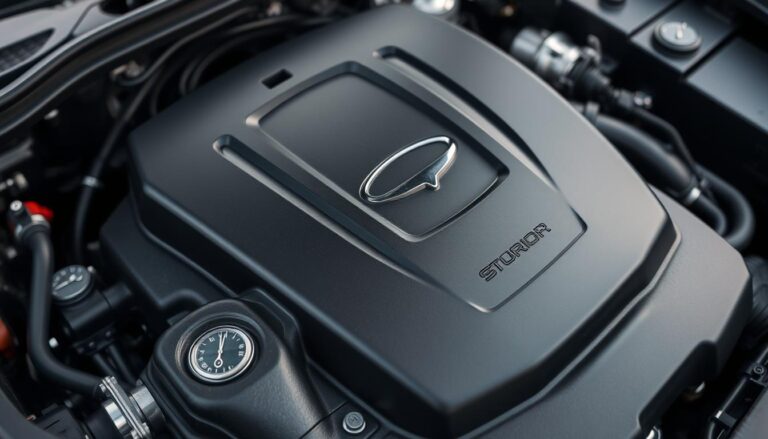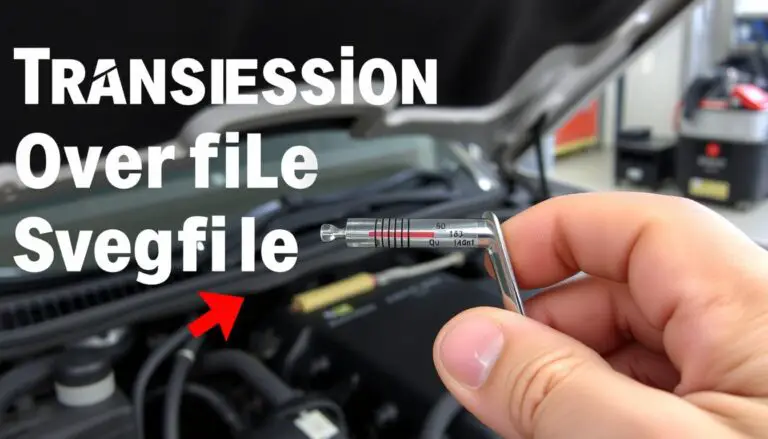Choosing the right heating system for your home can be a daunting task, especially with the numerous options available in the market. Dual fuel heat pumps have gained popularity due to their energy efficiency and ability to provide both heating and cooling. For homeowners looking to upgrade, understanding the benefits and features of the top models is crucial.
Some of the top-rated dual fuel heat pumps include the MrCool 18 SEER Variable Speed Central Heat Pump Split System and the Goodman 3 Ton 80% AFUE Dual Fuel Heat Pump. These systems are known for their efficiency and performance. For more information on the best systems, you can visit this resource on dual-fuel HVAC systems.
Key Takeaways
- Understanding the benefits of dual fuel heat pumps for your home.
- Top-rated models offer high energy efficiency and performance.
- Importance of choosing a system that fits your specific needs.
- Features to look for in a dual fuel heat pump.
- How to maximize energy savings with the right system.
Understanding Dual Fuel Heat Pump Technology
Dual fuel heat pumps represent a significant advancement in heating and cooling technology. They integrate the benefits of both heat pumps and furnaces to provide efficient heating and cooling solutions.
How Dual Fuel Systems Operate
Dual fuel heat pumps operate by switching between two energy sources: electricity and fuel (such as natural gas or propane). During milder temperatures, they use electricity to operate as a heat pump, while in colder temperatures, they switch to using fuel for heating. This dual operation ensures optimal performance and efficiency throughout the year.
Energy Efficiency and Cost Benefits
One of the primary advantages of dual fuel heat pumps is their energy efficiency. By choosing the most efficient energy source based on the outside temperature, these systems can significantly reduce energy consumption. This leads to cost benefits for homeowners, as they can save on their utility bills.
| System Type | Energy Efficiency | Cost Benefits |
|---|---|---|
| Dual Fuel Heat Pump | High | Significant savings |
| Traditional Heat Pump | Moderate | Some savings |
| Furnace Only | Low | Limited savings |
The table above illustrates the comparative energy efficiency and cost benefits of dual fuel heat pumps versus traditional systems.
The 5 Best Dual Fuel Heat Pumps for Your Home
Selecting the best dual fuel heat pumps for your home can be a daunting task without the right information. To simplify this process, we’ve evaluated various models based on specific criteria.
Selection Criteria and Methodology
Our selection of the top 5 dual fuel heat pumps was based on factors such as energy efficiency, cost, and performance. We considered the SEER and AFUE ratings of each unit, as well as their compatibility with existing HVAC systems.
The methodology involved a comprehensive review of product specifications, customer reviews, and expert opinions to ensure a well-rounded evaluation.
Key Features to Consider
When choosing a dual fuel heat pump, several key features should be considered:
- SEER Rating: Indicates the system’s cooling efficiency.
- AFUE Rating: Reflects the system’s heating efficiency.
- Compatibility: Ensure the system is compatible with your existing HVAC infrastructure.
Here’s a comparison of the top 5 dual fuel heat pumps based on these criteria:
| Model | SEER Rating | AFUE Rating |
|---|---|---|
| MrCool 18 SEER | 18 | 95% |
| Senville 3 Ton | 18 | 96% |
| Goodman 3 Ton 80% AFUE | 14 | 80% |
| Goodman 2.5 Ton 14 SEER | 14 | 80% |
| Goodman 3 Ton 14 SEER | 14 | 80% |
MrCool 18 SEER Variable Speed Central Heat Pump Split System
The MrCool 18 SEER Variable Speed Central Heat Pump Split System is a top contender in the market for those seeking efficient heating and cooling solutions. This system stands out due to its advanced variable speed technology, which allows for precise temperature control and enhanced energy efficiency.
System Overview
The MrCool 18 SEER Variable Speed Central Heat Pump Split System is designed to provide reliable and efficient heating and cooling. It features a variable speed compressor that adjusts its speed to match the heating or cooling demands of the home, resulting in reduced energy consumption and increased comfort.
Technical Specifications
- SEER Rating: 18 SEER, indicating high energy efficiency
- Variable Speed Compressor: Adjusts speed to match heating or cooling demands
- Compatibility: Works with various HVAC systems
Installation Requirements
Proper installation is crucial for optimal performance. The system requires a compatible indoor unit and a suitable outdoor installation site. It’s recommended to hire a professional for installation to ensure compliance with local building codes and to avoid voiding the warranty.
Performance Analysis
The MrCool 18 SEER Variable Speed Central Heat Pump Split System excels in both heating and cooling modes. Its variable speed compressor enables it to maintain a consistent temperature, reducing fluctuations and improving overall comfort.
- High energy efficiency with an 18 SEER rating
- Variable speed compressor for precise temperature control
- Quiet operation due to advanced compressor technology
Cons
- Higher upfront cost compared to standard systems
- Requires professional installation
- May have specific compatibility requirements with existing HVAC systems
Senville 3 Ton Inverter Heat Pump Split System
Senville’s 3 Ton Inverter Heat Pump Split System offers a robust and energy-efficient alternative for residential heating and cooling. This system is designed to provide reliable performance and comfort, making it an attractive option for homeowners.
System Overview
The Senville 3 Ton Inverter Heat Pump Split System is engineered with advanced inverter technology, allowing for precise temperature control and reduced energy consumption. Its split system design enables flexible installation options, catering to various home layouts and HVAC requirements.
Technical Specifications
This system boasts a 3-ton capacity, suitable for medium-sized homes. Key technical specifications include its inverter-driven compressor, which adjusts capacity according to heating or cooling demands, and its compatibility with a range of HVAC systems.
Installation Requirements
Proper installation is crucial for optimal performance. The system requires a compatible indoor unit and appropriate refrigerant line sizing. It’s recommended to consult with a professional HVAC technician to ensure compliance with local building codes and manufacturer guidelines.
Performance Analysis
The Senville 3 Ton Inverter Heat Pump Split System demonstrates impressive heating and cooling capabilities, coupled with significant energy efficiency. Its inverter technology allows for quieter operation and reduced wear on the system, potentially extending its lifespan.
- Energy-efficient operation
- Flexible installation options
- Quiet performance due to inverter technology
Cons
- Requires professional installation
- May have higher upfront costs compared to non-inverter models
Goodman 3 Ton 80% AFUE Dual Fuel Heat Pump
Goodman has established itself as a reputable brand in the HVAC industry, and its 3 Ton 80% AFUE Dual Fuel Heat Pump is a testament to its commitment to quality. This system is designed to provide efficient heating and cooling to homes, making it an attractive option for homeowners seeking to upgrade their HVAC systems.
System Overview
The Goodman 3 Ton 80% AFUE Dual Fuel Heat Pump is engineered to deliver reliable performance and energy efficiency. It combines the benefits of a heat pump with a gas furnace, allowing for optimal heating and cooling depending on the ambient temperature.
Technical Specifications
This system boasts a 3-ton capacity and an 80% AFUE rating, indicating its ability to efficiently convert energy into usable heat. It is compatible with various HVAC systems, making it a versatile choice for different home setups.
Installation Requirements
Proper installation is crucial for the optimal performance of the Goodman 3 Ton 80% AFUE Dual Fuel Heat Pump. It requires a compatible thermostat and adequate ductwork. Homeowners should consult with a professional HVAC technician to ensure that all installation requirements are met.
Performance Analysis
The Goodman 3 Ton 80% AFUE Dual Fuel Heat Pump offers impressive heating and cooling capabilities. Its dual fuel functionality allows it to switch between electric and gas heating, optimizing energy usage and reducing utility bills.
Key advantages include its high energy efficiency, reliable performance, and the ability to operate in various weather conditions. The system’s dual fuel capability is particularly beneficial in regions with fluctuating temperatures.
Cons
Some potential drawbacks include the initial investment cost and the need for regular maintenance to ensure optimal performance. Additionally, the system’s complexity may require specialized knowledge for troubleshooting and repair.
Goodman 2.5 Ton 14 Seer Dual Fuel Heat Pump and Goodman 3 Ton 14 SEER Heat Pump
When considering dual fuel heat pumps, Goodman offers reliable options with their 2.5 Ton 14 SEER and 3 Ton 14 SEER models. Both systems are designed to provide efficient heating and cooling, making them suitable for various climates and home sizes.
Goodman 2.5 Ton 14 Seer Dual Fuel Heat Pump
The Goodman 2.5 Ton 14 SEER Dual Fuel Heat Pump is a versatile HVAC solution that combines the benefits of a heat pump with a gas furnace. This system is ideal for areas where temperatures frequently drop below freezing.
Key Features and Specifications
This heat pump has a SEER rating of 14, indicating its energy efficiency. It is compatible with various HVAC systems and has a 2.5-ton capacity, suitable for medium-sized homes.
Pros and Cons
The pros of this system include its efficient dual-fuel operation and compatibility with existing HVAC setups. However, some users may find the installation process complex, and the upfront cost may be higher than traditional HVAC systems.
Goodman 3 Ton 14 SEER Heat Pump
The Goodman 3 Ton 14 SEER Heat Pump is designed for larger homes or those requiring more heating and cooling capacity. It offers reliable performance and energy efficiency.
Key Features and Specifications
With a 3-ton capacity and a SEER rating of 14, this heat pump is suitable for bigger spaces. It is also designed to work seamlessly with various HVAC systems.
Pros and Cons
The advantages of this heat pump include its high capacity and efficient operation. On the downside, it may consume more energy than smaller units, and the cost may be higher.
Conclusion
Dual fuel heat pumps offer an efficient and cost-effective solution for heating and cooling your home. By combining an electric heat pump with a gas furnace, these systems provide a reliable and energy-efficient way to maintain a comfortable temperature.
As discussed, the top 5 dual fuel heat pumps reviewed offer a range of benefits, including high energy efficiency and cost savings. When selecting a dual fuel heat pump, consider factors such as the system’s energy efficiency, cost, and performance in your local climate.
For optimal performance, dual fuel heat pumps should be installed correctly, and regular maintenance is essential. Homeowners can achieve 50% or more heating electrification with dual fuel systems, making them an attractive option for those looking to reduce their energy bills.
Rebates and incentives are available for homeowners who install energy-efficient dual fuel heat pumps. For example, Denver CARe offers rebates of up to $3,500 for cold climate heat pumps, while Xcel Energy provides rebates of up to $10,250.
By choosing the right dual fuel heat pump for your home, you can enjoy a reliable, efficient, and cost-effective heating and cooling solution.
FAQ
What is a dual fuel heat pump, and how does it work?
A dual fuel heat pump is a heating system that combines a heat pump with a furnace. It works by using the heat pump for heating and cooling during mild temperatures and switching to the furnace for heating during colder temperatures.
What are the benefits of using a dual fuel heat pump?
The benefits of using a dual fuel heat pump include increased energy efficiency, cost savings, and improved performance. Dual fuel heat pumps can provide both heating and cooling, making them a versatile option for homeowners.
What is the difference between SEER and AFUE ratings?
SEER (Seasonal Energy Efficiency Ratio) measures the cooling efficiency of a heat pump, while AFUE (Annual Fuel Utilization Efficiency) measures the heating efficiency of a furnace. A higher SEER or AFUE rating indicates greater energy efficiency.
How do I choose the right size dual fuel heat pump for my home?
To choose the right size dual fuel heat pump, consider factors such as your home’s square footage, insulation, and climate. It’s recommended to consult with a professional HVAC technician to determine the correct size for your specific needs.
Can I install a dual fuel heat pump myself?
While it’s possible to install a dual fuel heat pump yourself, it’s highly recommended to hire a professional HVAC technician to ensure a safe and proper installation.
What are the maintenance requirements for a dual fuel heat pump?
Regular maintenance for a dual fuel heat pump includes tasks such as filter cleaning, coil inspection, and refrigerant checks. It’s recommended to schedule annual maintenance with a professional HVAC technician.
How long does a dual fuel heat pump typically last?
The lifespan of a dual fuel heat pump can vary depending on factors such as usage, maintenance, and quality of the system. On average, a well-maintained dual fuel heat pump can last between 15 to 20 years.






